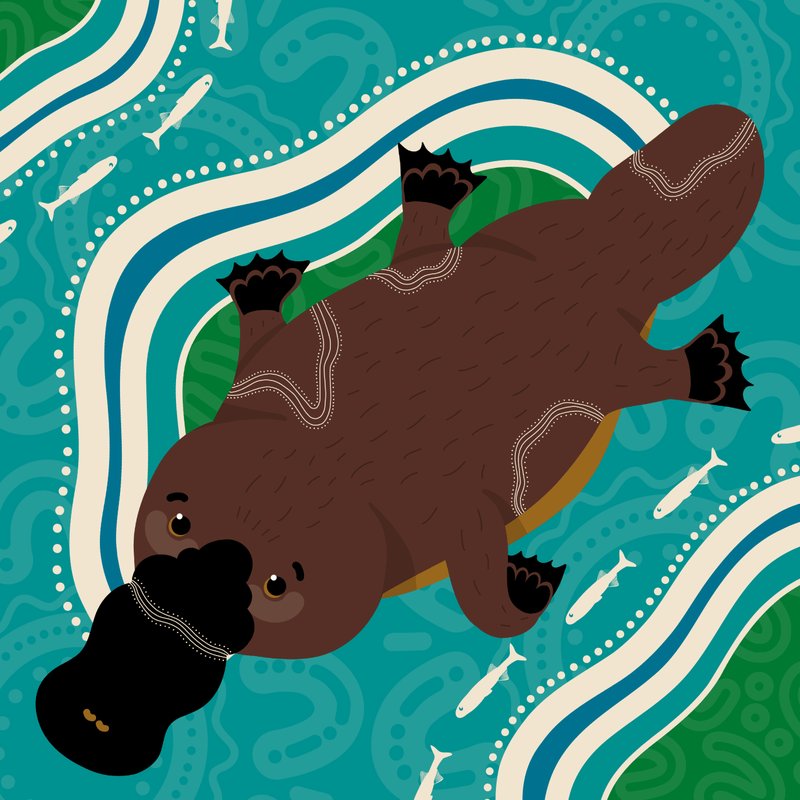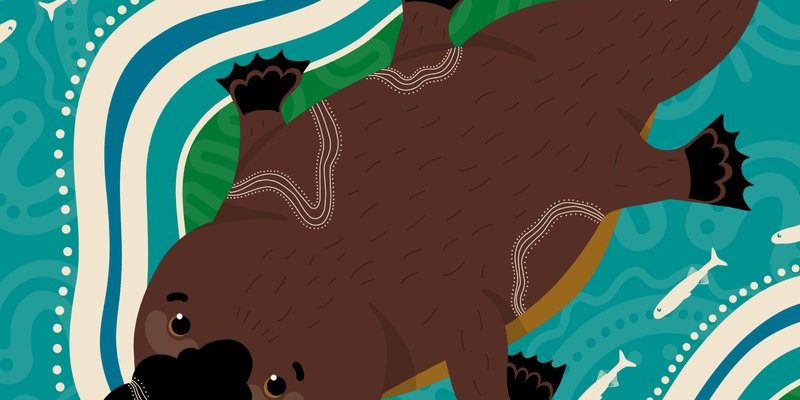
Cultures around the world have woven the platypus into their tapestries of stories, art, and symbolism. This creature often serves as a bridge between the ordinary and the extraordinary. From ancient tales to modern cartoons, the platypus has captured our imaginations in unexpected ways. Let’s dive into how this unique animal is portrayed in various cultural contexts and folklore. You might be surprised at the depth and variety of its representations!
The Platypus in Indigenous Australian Mythology
The platypus holds a special place in Indigenous Australian mythology. For many Aboriginal cultures, this remarkable animal is more than just a biological curiosity; it’s a significant part of their storytelling traditions. One well-known myth tells of how the platypus came to be. In this tale, the water and the land collided, and in that chaos, the platypus emerged as a symbol of adaptability and harmony between different realms.
Symbolism of the Platypus
Aboriginal stories often emphasize the platypus as a symbol of balance and duality. Its mix of features symbolizes the harmony between seemingly opposing forces—water and land, egg-laying and mammal traits. This duality resonates deeply in the culture, reminding individuals of the complexities of life and the importance of embracing differences.
The platypus is also featured in various art forms, from traditional Aboriginal paintings to contemporary interpretations. You can find platypus motifs woven into textiles or painted on canvases, highlighting its significance in both historical and modern contexts. In this sense, the platypus is not just a creature of nature; it becomes a vital element in expressing identity and cultural narratives.
Platypus in Western Culture: Curious Characters
In Western culture, the platypus has made its mark primarily through its portrayal in cartoons and children’s media. Who could forget Perry the Platypus from the hit show *Phineas and Ferb*? As a secret agent, Perry embodies the idea of unexpected talent and hidden depths. This character helped introduce a generation of kids to the oddities of the platypus, showcasing it as a hero rather than just an oddity of nature.
The Quirky Appeal of the Platypus
The appeal of the platypus extends beyond humor; it challenges conventional notions of what a mammal should be. It’s a reminder of life’s unpredictability—sometimes, things aren’t what they seem. This theme is often echoed in children’s literature, where the platypus often plays the role of the underdog or the unconventional hero.
Really, when you think about it, the platypus serves as a metaphor for embracing the unexpected. In a world that often favors the norm, this unique animal encourages us to celebrate individuality, quirks, and the beauty found in differences. It’s no wonder that the platypus has become a beloved figure for many.
Folklore: The Platypus and Its Mystique
Folklore is rich with fantastic creatures, and the platypus is no exception. In some stories, it’s depicted as a magical creature, sometimes possessing powers that reflect its unusual characteristics. For example, some tales suggest that the touch of a platypus can bring good luck or that it can guide lost travelers through enchanted waters. This mysterious aura adds an element of charm and intrigue to the platypus.
Cross-Cultural Representations
Interestingly, other cultures have their takes on the platypus, often as a symbol of the unknown. In these stories, it represents the integration of different worlds—like the animal itself, blending features of mammals, reptiles, and birds. This theme of integration resonates with many cultures, as they navigate their own identities and the complexities of coexistence.
The folklore surrounding the platypus often emphasizes themes of adaptability, suggesting that, much like the animal, we can thrive in diverse environments by embracing change. These stories reflect the universal understanding of resilience—something that many people can relate to regardless of their background.
The Platypus in Art and Literature
Art and literature have been instrumental in shaping our perceptions of the platypus. Artists around the world have found inspiration in its unique form, using it as a muse to explore themes of nature and creativity. In literature, the platypus often appears as a character in children’s books and fables, representing the importance of thinking outside the box.
Modern References
In recent years, the platypus has continued to capture hearts and minds through various media. For instance, it’s often featured in whimsical illustrations or as a character in animated films. You might encounter it as a symbol of curiosity and playfulness, inspiring younger audiences to explore and learn more about the natural world.
This representation of the platypus highlights the animal’s dual nature of being both a puzzle and an inspiration. Artists and writers have a unique way of interpreting its odd features, turning it into both a subject of fascination and a metaphor for life’s surprises. When we engage with these artistic representations, we gain a deeper appreciation for the complexities of nature and creativity.
The Platypus as a Cultural Icon
Over time, the platypus has evolved into a cultural icon, especially in Australia, where it’s recognized as a national symbol. Its distinctive appearance has made it a popular subject for souvenirs, merchandise, and educational materials. This recognition underscores the platypus’s role as a beloved ambassador for its habitat and, by extension, the importance of conservation efforts.
Role in Conservation
As a cultural icon, the platypus has become a vital part of discussions around wildlife conservation. Its presence in media and merchandise helps raise awareness about habitat preservation and environmental protection. The stories we tell about the platypus can foster a desire to better understand and protect the natural world.
In this way, the platypus serves not only as a symbol of uniqueness but also as a reminder of our responsibility to the environment. Cultural representations of the platypus can ignite conversations about conservation efforts and the importance of maintaining biodiversity. So, the next time you see a platypus, whether in real life or in art, consider it a call to action for protecting our planet.
The platypus is more than just an odd animal; it’s a rich symbol woven into the fabric of various cultures and stories. From Indigenous Australian mythology to modern media representations, this creature offers us valuable lessons about adaptability, uniqueness, and the importance of embracing diversity.
As we explore the cultural significance of the platypus, we realize that it holds a mirror to our own experiences. Just like the platypus, each of us is a blend of many characteristics, and that’s what makes life interesting. So, as you encounter this enchanting creature—be it in a story, artwork, or nature—take a moment to appreciate the beauty of its complexities and the rich culture it represents.

